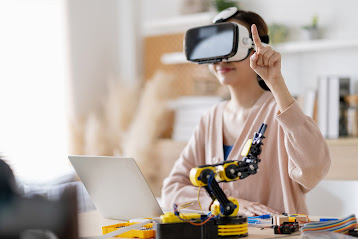Empowering Young Minds: Girls in Goggles Leading the Way in STEM Education

Across classrooms, laboratories, and innovation hubs around the world, a quiet but powerful revolution is taking place—girls, clad in protective glasses and armed with curiosity, are diving into the exciting world of science, technology, engineering, and mathematics (STEM). These hands-on science experiments, often led in school labs or science clubs, are more than just curriculum activities—they are the first steps in transforming future leaders, inventors, and change-makers. Breaking Stereotypes Through Action Historically, the STEM fields have been male-dominated, with women underrepresented in nearly every scientific and technical career. Girls are often subtly discouraged from pursuing science and math from a young age—through outdated stereotypes, a lack of visible role models, and limited access to resources. However, this narrative is changing. The image of two girls wearing protective goggles and confidently conducting a science experiment speaks volumes. It symbolizes res...








